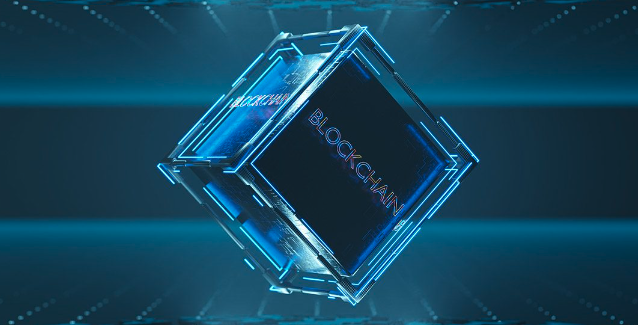Have you recently realized the appeal of blockchain application technology and its impact on the tech world? If so, then make sure you are correct about the place. This tutorial will tell you everything about blockchain, its implementation from start to finish, and its usage for developing decentralized and secure applications. This manual would be helpful for both first-timers and enterprises. We will begin by polarising the facts and end up with more challenging blockchain complexities.
After reading this guide, you will be highly competent in using blockchain to create/build applications that are tamper-proof and immune from censorship. Hence, let’s take a plunge and develop our first blockchain application.
Understanding Blockchain Applications
Before starting the blockchain development procedures, knowing what it is and its work in technological revolutionization is essential.
What Is Blockchain?
Blockchain is a decentralized technology. It is built with a distributed ledger that keeps information on transactions and secures them from any cyberattack. It provides transparency between the user and the service provider. Each block in the chain consists of a cryptographic hash code of the most recent transaction on the block and a timestamp because every block is connected to the center. It is virtually impossible to tamper with the data once it is recorded.
Blockchain technology has several applications, mainly in cryptocurrencies like Bitcoin. It helps in supply chain management, voting systems, and more.
3 Types Of Blockchain
It is essential to know the types of blockchain because it is going to help you determine which suits your business:
Public Blockchain
A public blockchain is a worldly network serving as a basis for willing participants in a particular network. This kind of blockchain is a truly decentralized structure; hence, no one will be in control of it like a central authority. Although it is platform-open, it is delivered with transparency and a safety guarantee. It will provide a technology solution for tax payments, cryptocurrency, etc.
Private Blockchain
Private blockchains are bound to specific members or an organization. They help businesses and enterprises protect their confidential data and secure it from malware and other cyberattacks. They are generally used for supply chain management and other internal applications.
Consortium Blockchain
A consortium blockchain is a complete hybrid of public and private blockchains. Its control is in an organization that must agree to share the network. It is more secure than a public blockchain and is decentralized.
Each type of blockchain has its own field of work and proficiency. You can choose which blockchain network to use according to your organization’s and targeted audience’s needs.
What Are Blockchain Features?
Decentralisation
In fact, blockchain is empowered to do so by generating a digital ledger containing all the transactions performed within the blockchain network. The ledger spreads across multiple nodes, thus excluding any single entity from monopolizing control. The data is locked this way, so its valuation cannot be changed unless all the networks agree, which keeps the data secure.
Also, the blockchain decentralization feature makes transactions transparent. In other words, transactions are recorded in the blockchain, an open ledger accessible to all nodes in the network. Thus, everybody can verify a transaction independently, and there is no need for the expensive services of intermediaries who used to charge these high fees.
Distributed
Blockchain works on a distributed ledger, allowing all network participants to have a copy, which helps improve transparency. A public ledger provides complete information about active users and their transactions.
Consensus
Every blockchain has consensus, which assists the network in making quick and unbiased decisions. Basically, it is a decision-making algorithm that ensures the system’s smooth functioning. Everyone must have at least one consensus algorithm, or it will lose value.
Unanimous
A node or segment that needs to be added to a block requires majority voting, as it can’t be done automatically. Generally, a node can’t add, delete, or update any information on the network. Thus, it is impossible to apply some changes without the consent of the majority.
Planning Your Blockchain Application
Planning and understanding what you want to have is the primary step in developing your blockchain. You can consider the following questions:
- What is the purpose of your application?
- What type of data will your application store on the blockchain?
- Who will be the users of your application?
- What type of functionality will your application have?
- What programming language will you use to build your application?
Once your idea clarifies what you want to develop, it’s time to start setting up your development environment.
Steps To Develop A Blockchain Application From Scratch
Developing a blockchain application from scratch can be challenging, but it is not impossible. Here are some essential steps that could be followed during development:
Choosing The Right Platform
The first step in pursuing blockchain development is to choose the right platform. Researching the technology trend and comparing its weaknesses and strengths is essential to finding the right one. Some popular platforms are available on the market: Ethereum, Hyperledger, and Cobra.
When choosing a blockchain platform, it is essential to understand factors like security, scalability, and ease of use. The tool’s ability and resources to get started with top-notch development should also be considered.
Creating A Blockchain Network
Once you find the right blockchain development platform, you must create a blockchain network. This network includes a set of infrastructure, nodes, databases, and communication channels.
Also, ensuring the network is secure and compatible with authenticating and authorizing while participating in any network is necessary. It would be better if you also understood the factors needed to build the network, such as scalability and redundancy.
Developing The Smart Contract
As we know, smart contracts are self-executing contracts built on blockchain. A smart contract is a program that contains the terms and conditions of a particular contract, and when determined needs are met, they are executed automatically.
Developing a Smart Contract requires expertise and a top skillset in blockchain technology. It is mandatory to ensure that the smart contract terms are derived precisely and securely to meet the contract requirements.
Testing And Launching The Blockchain Application
After the development of blockchain technology is complete, it is essential to test it before launching. This should guarantee the project’s reliability and security. It includes testing the program’s vulnerabilities and bugs to ensure it matches the contract’s requirements.
After complete testing, the application is ready to be launched on the blockchain network. It involves deploying the smart contract and network configuration to ensure the blockchain application is accessible to users.
Potential Use Cases For Blockchain Applications
Several potential use cases of blockchain can be found. Here, we’ve mentioned some promising cases:
Financial Services
There is no doubt that blockchain technology has the true potential to revolutionize the financial services industry. The blockchain makes it easy to transfer payments with security and accountability. It keeps an eye on tracking the exact location of the payment, which creates transparency for the user and provider.
Healthcare
Blockchain can also improve the healthcare system. It can store and manage patient data with security and ease of access. Blockchain also helps manage and keep medical records transparent so that it can suggest proper medication to a patient.
Supply Chain Management
Blockchain technology can also be used to manage and improve the supply chain. Due to its structure, blockchain helps create more transparent and efficient supply chain systems. It also helps build traceability and accountability for products and materials.
Government
Blockchain helps the government keep records of health, certificates, registries, voting, smart contracts, and academic qualifications. It also allows the government to protect its data and reduce fraud and abuse.
Examples Of Blockchain Technology In Practice
Here, we introduce you to a few of the best examples of blockchain technology being exercised in the market:
Spotify
Spotify used blockchain to avoid spammers. It builds a decentralized database that helps connect the artist’s content directly to the user or viewer. It also helped them improve their connection and licensing agreement, keeping Spotify services on track.
Retail
Undoubtedly, the retail section has grown a step ahead with the help of blockchain technology. Blockchain allows users to purchase products directly from the supplier without third-party indulgence. It also became more accessible to get a refund or return if any product malfunction occurred.
Food Industry
In the food industry, blockchain helps solve complex network problems causing challenges related to food-borne illness. Blockchain shares the proper location of the vendor and verifies it directly, which allows customers to get a portion of quality food and reduces disease and food poisoning.
Bottom line
Developing a blockchain application is a big deal. However, with proper guidance and expertise, your business can have cutting-edge blockchain solutions. Going through the steps mentioned above in this blog, you can build a secure, reliable, and user-friendly platform for your users. Whether you are oriented toward developing a blockchain for finance, healthcare, or the supply chain, blockchain can revolutionize any industry. Hence, blockchain is going to transform technology in each sector. So, start unlocking the full potential of blockchain today and create a game-changing application that solves real-world problems.




